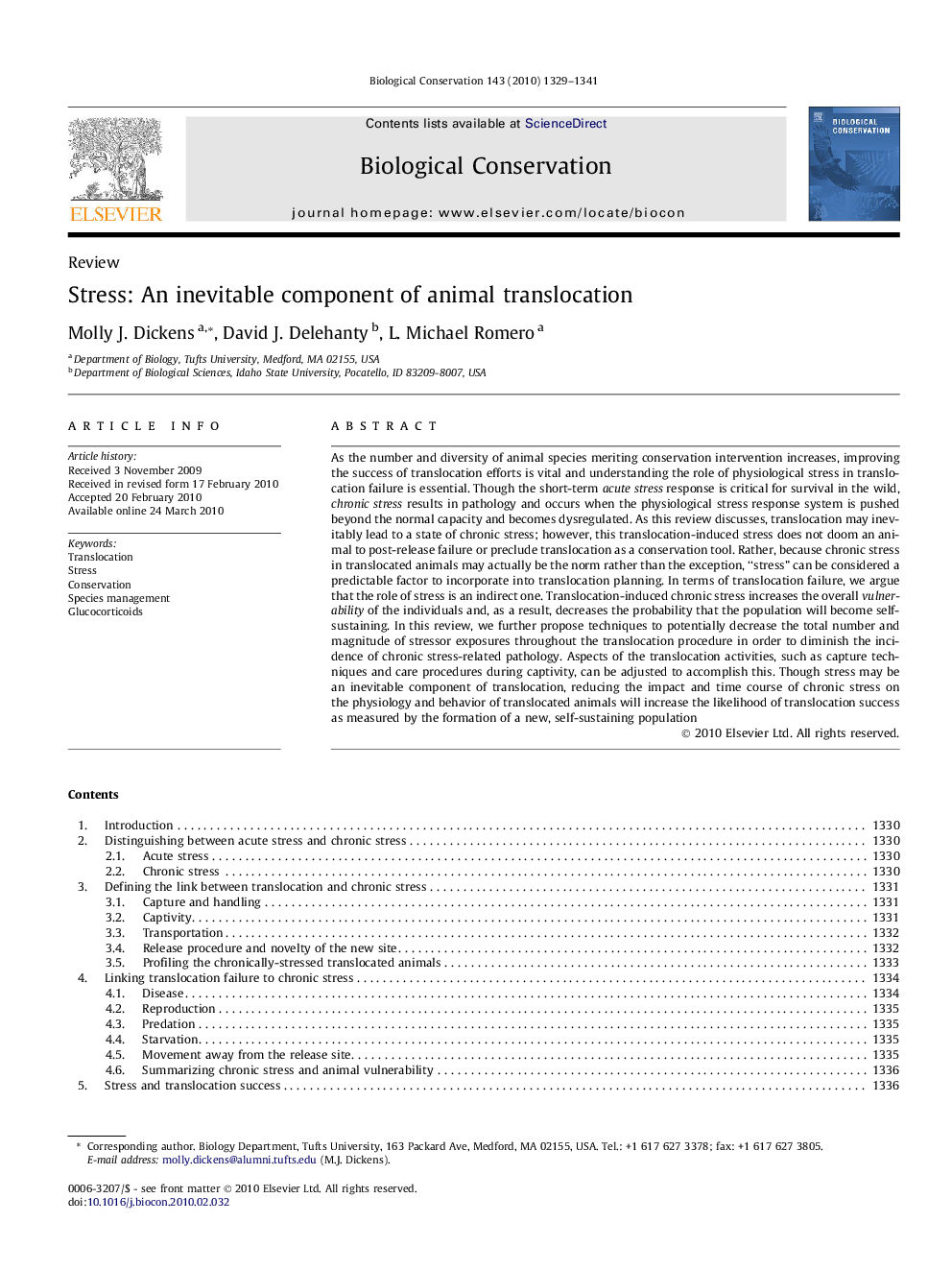| Article ID | Journal | Published Year | Pages | File Type |
|---|---|---|---|---|
| 4385568 | Biological Conservation | 2010 | 13 Pages |
As the number and diversity of animal species meriting conservation intervention increases, improving the success of translocation efforts is vital and understanding the role of physiological stress in translocation failure is essential. Though the short-term acutestress response is critical for survival in the wild, chronic stress results in pathology and occurs when the physiological stress response system is pushed beyond the normal capacity and becomes dysregulated. As this review discusses, translocation may inevitably lead to a state of chronic stress; however, this translocation-induced stress does not doom an animal to post-release failure or preclude translocation as a conservation tool. Rather, because chronic stress in translocated animals may actually be the norm rather than the exception, “stress” can be considered a predictable factor to incorporate into translocation planning. In terms of translocation failure, we argue that the role of stress is an indirect one. Translocation-induced chronic stress increases the overall vulnerability of the individuals and, as a result, decreases the probability that the population will become self-sustaining. In this review, we further propose techniques to potentially decrease the total number and magnitude of stressor exposures throughout the translocation procedure in order to diminish the incidence of chronic stress-related pathology. Aspects of the translocation activities, such as capture techniques and care procedures during captivity, can be adjusted to accomplish this. Though stress may be an inevitable component of translocation, reducing the impact and time course of chronic stress on the physiology and behavior of translocated animals will increase the likelihood of translocation success as measured by the formation of a new, self-sustaining population
